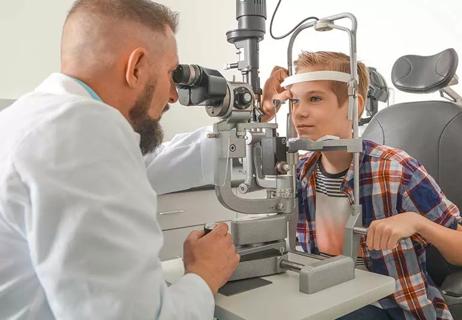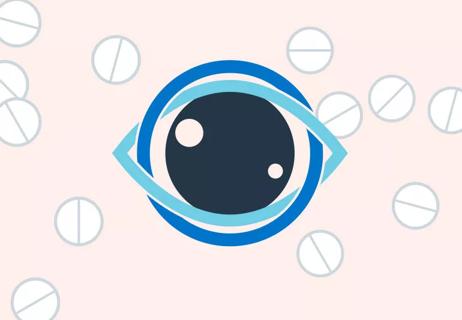Your eye prescription reveals a lot about your eye health, including how they’re shaped, how well you see and what your new glasses can do for your sight

OD -2, axis 90, PD 61.
Advertisement
Cleveland Clinic is a non-profit academic medical center. Advertising on our site helps support our mission. We do not endorse non-Cleveland Clinic products or services. Policy
Sounds like a good, strong password for your email account — but these seemingly random letters and numbers are actual measurements that may appear on your eyeglass prescription. If you have trouble understanding your prescription and what it means for your vision, you’re not alone.
“Most people don’t know what each part of the prescription means,” says optometrist Thomas Krainz, OD. “But those pieces add up and offer a good picture of your eye health. It’s always good to know how and when your prescription changes.”
Many people, even those who don’t wear glasses, find that their vision changes as they age. Most adults experience vision changes after 40 and more than 92% of Medicare beneficiaries 65 and older report using glasses.
“It’s a natural part of aging,” Dr. Krainz says. “Most people will get a prescription for eyeglasses at some point in their lives.” And non-prescription “cheaters” will only get you so far.
Dr. Krainz demystifies eyewear prescriptions for us.
Eyeglass prescriptions generally follow the same format, with the information displayed in a table. Abbreviations and numbers provide information for each eye that helps determine details of your new eyeglass lenses, such as their:
Advertisement
“Each eyeglass lens is a tool that helps you focus and see clear images,” Dr. Krainz says. “When you look at your prescription, don’t think of it as an indication of eye weakness or strength. Each new prescription offers the best way to focus your eyes.”
Each part of your eyeglass prescription has a different designation that pertains to a different part of your eyes or vision. Here’s what it all means.
The table on your prescription typically includes two rows, one for each eye:
The numbers listed to the right of each abbreviation relate to that eye.
Anything labeled OU means “oculus uterque” or both eyes. But that abbreviation is rarely used, as most people require a different prescription for each eye.
Eye care specialists determine the strength needed to correct your eyesight using diopters, a unit that measures the power of a lens. Eyesight measuring zero diopters doesn’t require any help from glasses or contacts. The farther the diopter is from zero — whether it’s positive (+) or negative (-) — the more correction you need.
“The typical measurements on prescriptions range between -5 and +3 diopters,” Dr. Krainz says. “But you certainly have outliers measuring in the double digits.”
But what do the negative and positive prescription numbers mean?
Negative numbers on your prescription mean you have nearsightedness (myopia), which is trouble seeing objects or writing from a distance. Nearsightedness may affect your ability to read street signs or see details of a person or object across the street.
The number on your prescription indicates how many diopters of power are needed to correct your eyesight. If your prescription lists -2, your lens needs two diopters of power to help you see distance clearly. Nearsightedness below -5 is considered severe (high myopia).
Positive numbers mean you have farsightedness and can’t see close-up objects clearly. Farsightedness (hyperopia) may make it difficult to read a restaurant menu or see your phone clearly. The higher the number, the more correction you need. Anything more than +3 is considered high hyperopia.
Most people’s eyes are round, with the same curvature all around, like a sphere or basketball. One simple correction works for the entire eye. The number listed in the sphere (SPH) column is the overall correction you need from your glasses.
Advertisement
“The sphere number is your glasses’ main power,” Dr. Krainz says. If your eyes are a standard, round shape and you need some help for either distance or up close, SPH measurements may be the only numbers listed on your prescription.
Approximately 33% of people in the U.S. have eyes that aren’t sphere-shaped. They have astigmatism, where the eyes are oval-shaped, like an egg or an American football. Astigmatism is a type of refractive error — a vision problem that occurs when light doesn’t enter your retina (the back of your eye) the right way.
“Astigmatism is a vision error caused by the shape of the front of your eye,” Dr. Krainz explains. While you can have astigmatism in just one eye, having it in both is more common.
For people with astigmatism, one universal correction won’t entirely fix their vision. Your provider will use the number in the CYL column and the SPH measurement to account for the different curves in your eye. SPH is the correction needed for the round part of your eye, and CYL relates to the correction needed for the oblong curvature in your eye. This area of the chart will be blank if you don’t have astigmatism.
The axis column also pertains to astigmatism. It explains where astigmatism is on your cornea (front of your eye) — relaying how your oblong-shaped eye tilts on a scale of 0 to 180 degrees.
Advertisement
“An eye shaped like a football has different curvature in two different directions — long and flatter in one direction and a skinnier, more pronounced curve in the other direction,” Dr. Krainz says. “Most people with astigmatism have two main curvatures about 90 degrees apart.”
The axis measurement describes where that pronounced curvature happens. If the sharper curve points straight up — like a football standing on-end — the axis is 90 degrees. If the football is on its side, with the sharper curve pointing left or right, the axis is 180 degrees.
Some people need or want two different prescriptions in one lens. Glasses with two prescription strengths have one toward the top and one toward the bottom of the lens. These glasses allow you to see clearly in multiple settings and during various tasks without having to remove or switch your glasses. Adding the number in the “add” column to the SPH number provides the second prescription (for the bottom of the lens).
Eyeglass lenses that have two separate strengths include:
Advertisement
“Progressive lenses, sometimes written as PAL (progressive additional lens), use the same numbers at the top and bottom as bifocals, but they squish in all the levels between instead of making a drastic leap from one to the other,” Dr. Krainz explains. How quickly that progression happens depends on the company or lab making the progressive lens.
If you have double vision (diplopia), your optometrist might prescribe prism correction. Double vision is another type of refractory error that happens when light hits two areas of the retina instead of one. Adding prism correction to eyeglasses bends the light entering the eye. The bent light falls on the correct part of the retina, producing one image instead of two.
“Prism is a triangular-shaped lens that bends light to change the direction of the image,” Dr. Krainz notes. “We can move the image either up, down, left or right, depending on where we put the prism’s base.”
On a prescription with prism correction, the optometrist will make a note to direct the placement of the prism base and move the image:
Cosmetically, no one can tell that glasses have prism correction. The lens may be slightly thicker if you require more than one prism.
Pupillary distance (PD) is the distance between your pupils — the dark centers of your eyes. That measurement determines where the optical center of the prescription should be. PD is especially important if you have a complicated prescription.
“If the lenses aren’t perfectly centered, it can be hard for your eyes to adapt. It can even cause double vision, essentially adding the need for prism correction,” Dr. Krainz states.
“Measuring pupillary distance is helpful for vision accuracy and offers a more seamless transition to your new prescription, especially if you’ve had issues adapting in the past.”
An optician (eyeglass specialist), not an optometrist, measures PD. If you have no previous issues or your prescription isn’t complicated, the optician may use a standard distance instead of measuring.
Eyeglass prescriptions have an expiration date — typically two years from when you got them. It’s a good reminder to get an eye exam at least every two years.
“Most optometrists recommend getting checked every two years, but sooner if you feel like your vision is changing,” Dr. Krainz says. “If you’re older and have other underlying conditions such as high blood pressure, diabetes or an autoimmune condition, have an exam every year.” These conditions increase the risk of vision loss and may affect the health of your eyes.
Now that you have your eyeglass prescription in hand — and know what it means — does it matter who makes your glasses? It does, Dr. Krainz says.
“Not every place makes lenses the same or offers the same quality,” he explains. “Online retailers can be a safe bet if you have a single vision prescription. But an in-person fitting is generally best if you’re getting bifocal or progressive lenses.”
If you have any questions or concerns about your eyewear, fittings, what’s right for you and your individual eyes, your healthcare team can help make this process more manageable and much less complicated.
“There are multiple options when it comes to filling your spectacle prescription, including private optometry and ophthalmology practices, lone-standing private opticals, online retailers, and commercial retailers,” says Dr. Krains.
“Each one has its advantages and disadvantages which you will have to weigh for yourself. But I recommend bifocal, progressive, and trifocal prescriptions to be filled in-person as they require an optician to make measurements catered to your face. My main piece of advice is to ‘go with what you know.’ Fill the prescription where you have had the best success with past prescriptions.”
Learn more about our editorial process.
Advertisement

Our vision and eye experts have the clear answer

Find out if these lenses are worth the hype and extra bucks

The short answer from an ophthalmologist

It’s critical to have the proper eyewear if you plan to look up at the sun, especially during the total solar eclipse on April 8, 2024

If your eyes suddenly take on a different color, it could be a sign of a medical concern

Plan on an annual vision screening, but a full exam may not be necessary

Weighing benefits against age-related macular degeneration risk

Type 2 diabetes isn’t inevitable with these dietary changes

Applying a hot or cold compress can help with pain